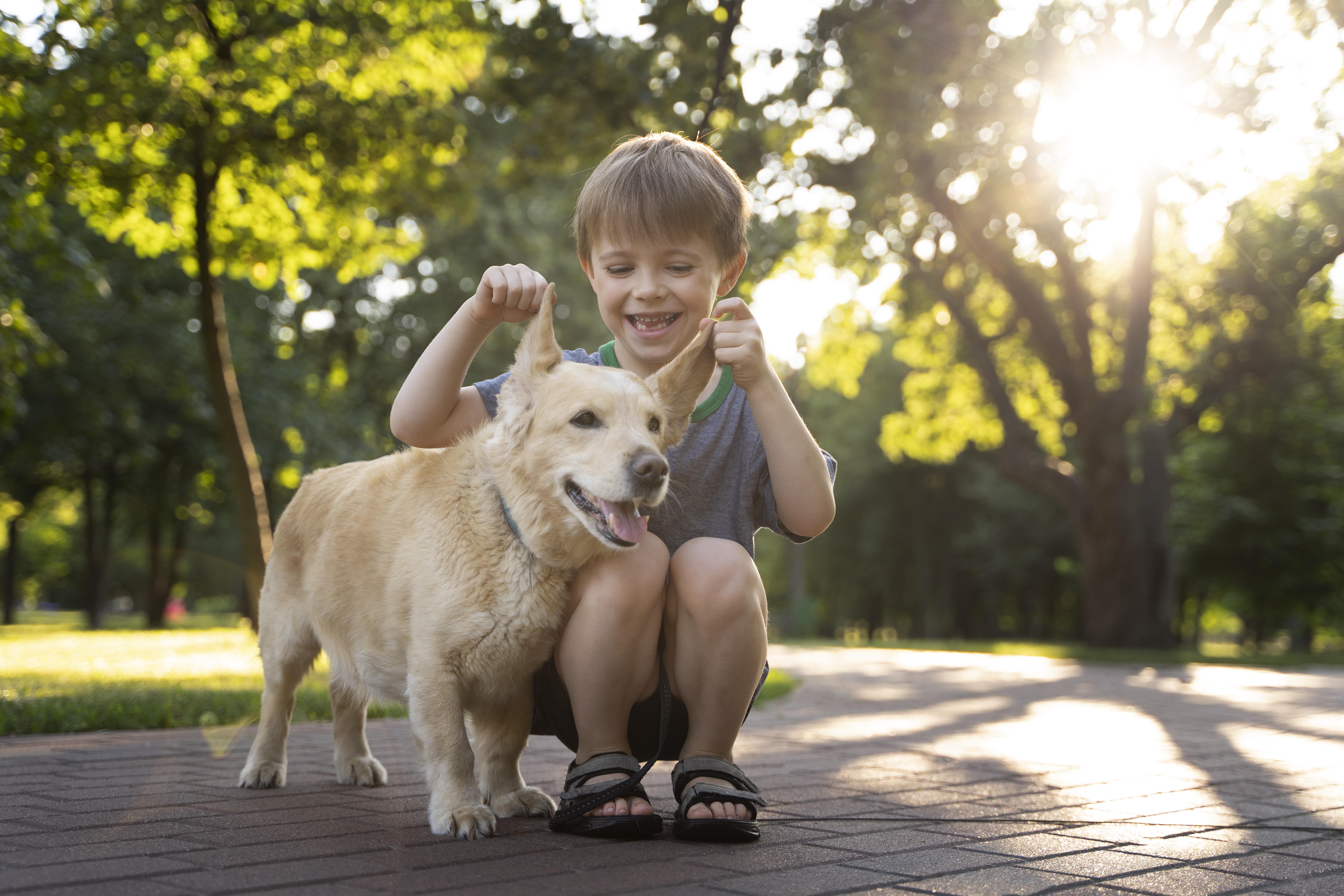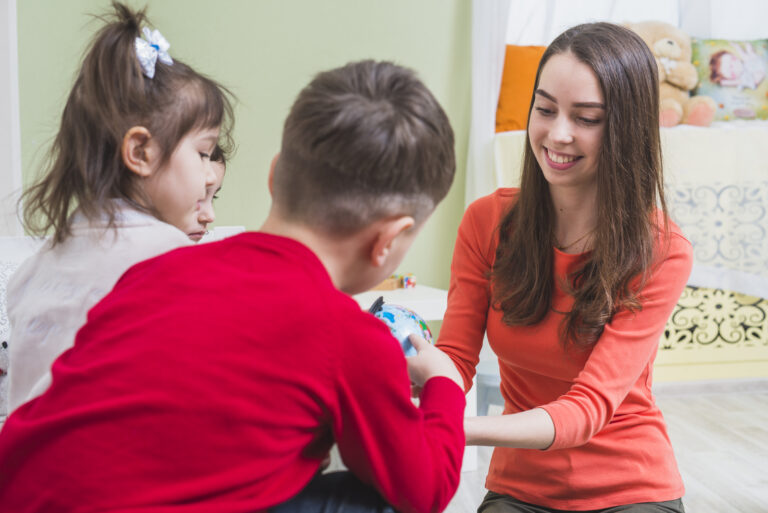Animal-Assisted Therapy for Autism: Benefits & Experiences
As a parent of a child with autism spectrum disorder, finding therapies that truly connect with your child can feel like a constant search. You seek approaches that foster joy, communication skills, and comfort in a world that can often feel overwhelming. Animal-assisted therapy (AAT) may be one such approach.
Many parents wonder if animal interaction could be the key to unlocking their child’s potential. For families considering a school for autism, animal-assisted therapy (AAT) may offer valuable benefits by complementing educational and developmental strategies. This exploration of AAT aims to provide you with the support and information needed to make informed decisions about its potential for autistic children.
Table of Contents:
- The Wonders of Animal-Assisted Therapy for Autism
- Benefits and Experiences with Animal-Assisted Therapy for Children with Autism
- Practical Considerations for Animal-Assisted Therapy
- Conclusion
The Wonders of Animal-Assisted Therapy for Autism
Animal-assisted therapy involves animals playing a key role in structured therapeutic sessions. It’s a goal-oriented intervention, aiming to achieve specific treatment goals and improve the therapeutic relationship. (Greenwood; 2011)
How Does Animal-Assisted Therapy Work?
The animal acts as a bridge, facilitating communication and building rapport between the therapist and the child. This can be especially helpful for children with autism spectrum disorder, who may experience challenges with communication and social interactions, as outlined in the Diagnostic and Statistical Manual of Mental Disorders (DSM-5). Animals offer a calming presence, creating a sense of comfort and security. (Turner, 2011)
Animals provide numerous benefits in therapy sessions. They can lower anxiety, encouraging active participation. This positive experience helps improve behavior and focus. Animal interactions during therapy can support the development of skills development, such as respect, compassion, and responsibility.
A Spectrum of Animal Interactions
AAT incorporates various therapy animals, from small animals like guinea pigs to larger animals like horses (Bert et al., 2016). The choice of animal depends on the child’s needs and sensitivities.
| Animal | Benefits |
|---|---|
| Dogs | Soothe anxiety, improve communication, teach responsibility. |
| Horses | Improve mood, motor skills, and self-confidence. They can also address sensory sensitivities. |
| Guinea Pigs & Small Animals | Boost social behaviors, enhance interaction and empathy, and provide tactile stimulation. |
Research suggests positive impacts from animal interactions using therapy dogs and horses in equine-assisted therapy (Martin and Farnum, 2002; Trzmiel et al., 2019). A review by Morrison (2007) highlights the health benefits of animal-assisted interventions. Children’s increased interaction during sessions with dogs indicated enjoyment of the dog’s presence. Some non-verbal children may spontaneously vocalize or show positive emotions around animals.
Benefits and Experiences with Animal-Assisted Therapy for Children with Autism
Exploring the Benefits
Research shows animal therapy may significantly affect social skills, cognitive function, and sensory processing. Studies also explore AAT’s role in improving hyperactivity, emotional intelligence, and empathy. Some autistic children experience reduced anxiety, improving their ability to manage triggers and promoting calmness (Animal Assisted Therapy on WebMD). Therapy animals can enhance self-esteem, fostering a sense of belonging.
Withdrawn children may become more confident through animal-assisted interventions. AAT can improve communication, showcasing its potential to complement traditional treatment methods.
Sensory Adventures with Animals
Children with autism spectrum disorders often process sensory input differently. Animal therapy offers sensory experiences tailored to their specific challenges. For instance, grooming a dog offers gentle tactile input.
The rhythmic movement of a horse can aid motor control. Children with tactile sensitivities may find comfort in brushing horses. These sensory experiences can help regulate emotional and physical responses.
Emotional and Intellectual Growth
Animal therapy nurtures emotional and intellectual growth. The special bond formed between child and animal can boost social interaction and important life skills, such as self-regulation and empathy.
Animal-assisted therapy can facilitate communication in unexpected ways. Interactions between an autistic child and a service dog, for instance, can spark moments of joy and connection. These outcomes often exceed expectations based on traditional therapy methods (Seven Unique Experiences).
Practical Considerations for Animal-Assisted Therapy
Types of Animal-Assisted Therapy
Animal-assisted therapy encompasses a range of activities, from casual interactions (animal-assisted activities) to targeted treatments (animal-assisted therapy) (Animal-Assisted Intervention for Autism). Understanding the differences is critical to matching a program to your child’s unique requirements. Equine-assisted therapy offers unique opportunities to address both physical and emotional well-being through interactions with horses. Service dogs are specially trained to provide support and increase independence.
Choosing the Right Program
Choosing an animal-assisted therapy program requires thorough research (Benefits of Animal Assisted Therapy for Autism). Look for certified professionals with specialized training in animal-assisted intervention. Ensure the therapy animals are properly trained and assessed for suitability in therapeutic settings.
Starting animal therapy can feel overwhelming. Consulting with medical professionals and other experts familiar with autism spectrum disorders can guide your decision-making. They can help assess your child’s specific needs and recommend a program that considers temperament, sensory sensitivities, and developmental goals. Carefully evaluate the program’s qualifications, including the animal’s training, handlers’ expertise, and adherence to safety protocols. Animal welfare considerations are paramount to responsible AAT practice. A structured risk assessment is vital to prioritize both child and animal safety and well-being. Horseback riding activities demand specialized training and infrastructure within the equine-assisted therapy program.
Alternative approaches for children with autism dev disord may also include food therapy for dietary restrictions or sensitivities and physical therapy to improve motor skills and physical development.
Conclusion
Animal-assisted therapy offers a unique and potentially powerful approach for children with autism spectrum disorders, blending scientific research with personalized experiences. For families navigating life with autism, this therapy can create meaningful connections and foster growth in ways traditional methods may not. While professional guidance is crucial, real-life experiences provide invaluable insights into implementing AAT successfully and tailoring it to individual needs.
Embracing animal-assisted therapy may lead to positive outcomes for your child. Each interaction creates new opportunities for breakthroughs and the development of valuable life skills. The affectionate nature of animals can decrease autistic traits and provide positive social interaction. Animal-assisted therapy promotes a positive impact and supports the overall emotional well-being of autistic children.





